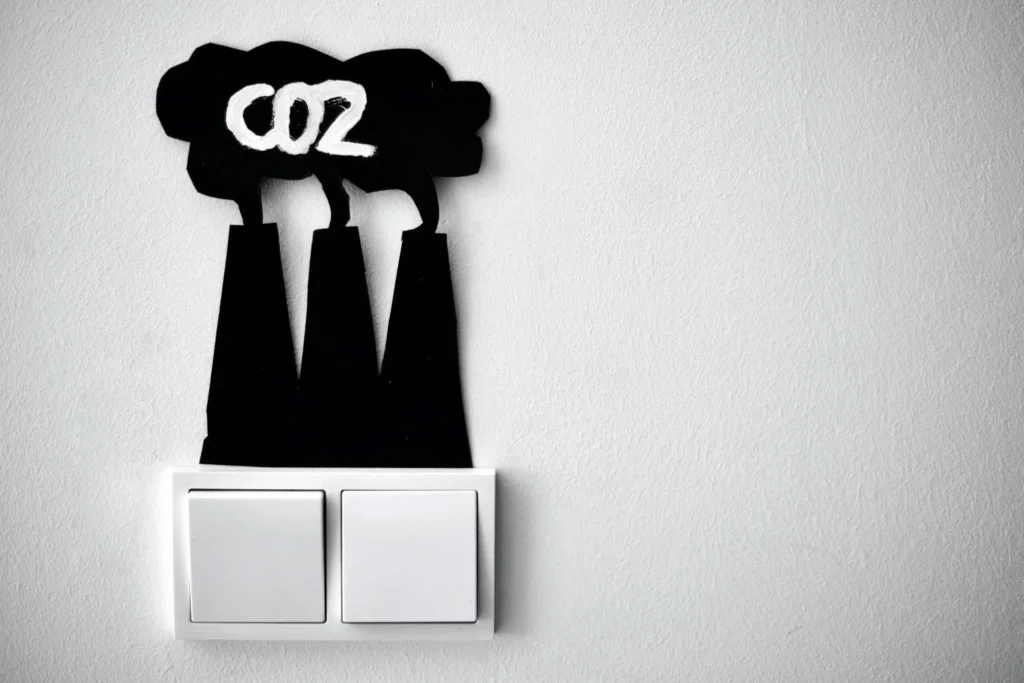
Integer posuere erat a ante venenatis dapibus posuere velit aliquet sites ulla vitae elit libero






The term “greenhouse gas” refers to any gas in the atmosphere that acts as a heat trap (GHG). The term “greenhouse gas” was given to these types of gases due to their ability to behave in a manner analogous to that of greenhouse glass. They don’t block the sun’s rays, so the heat-generating rays are able to penetrate undisturbed all the way through to the earth. But when that heat tries to rise and radiate, it is unable to travel through the gases or the glass. As a result, it builds up, which causes the temperature outside to rise. This phenomenon is referred to as the greenhouse effect by scientists.
If it weren’t for greenhouse gases, the average temperature throughout the planet would be 0 degrees Fahrenheit, which would be catastrophic for life on Earth. However, because of human activity, an excessive amount of greenhouse gases has been emitted into the atmosphere. These human activities include particular agricultural practices as well as the usage of fossil fuels. It is largely agreed that this is the primary cause of the unnatural rise in average world temperature. The amount of greenhouse gases that are created and released into the atmosphere by countries all around the world varies significantly. A nation’s overall emissions level can be described using a variety of parameters, including the size of its population, its GDP, its energy sector, and others.
Electricity and heat generation (25%), agriculture, forestry, and other land use (24%), industry (21%), and transportation (14%) are the economic sectors that contribute the most greenhouse gas emissions, as per reports of the Environmental Protection Agency (EPA).

Carbon dioxide (CO2) has a significantly larger global presence than any other greenhouse gas. CO2 accounts for approximately four-fifths of all emissions of greenhouse gases that are induced by human activity. It was mostly caused by the combustion of fossil fuels (such as coal, natural gas, and oil) for the production of power or as fuel for automobiles. Additional sources include inorganic trash, biological substances, and certain chemical interactions.
Since 1970, there has been a 90% increase in the amount of carbon dioxide that the world’s industries have been emitting into the atmosphere. Approximately 78% of this increase can be attributed to the burning of fossil fuels and other industrial processes.
Methane is released into the atmosphere in significantly smaller levels than carbon dioxide, but it has a significantly greater influence on the climate and is approximately 25 times more detrimental to the ecosystem over a period of one hundred years. Methane is released into the atmosphere from a combination of natural sources (35–50%), such as wetlands, and human activities (50–65%).
People are responsible for the methane emissions that are produced through landfills, coal mining, the extraction of natural gas, and wastewater treatment. It’s possible that raising cattle is the most well-known source of methane released into the atmosphere. The massive scale of the world’s meat industry results in a substantial amount of methane being expelled into the atmosphere by the combined farts and waste products of the animals used in the industry.
Nitrous oxide is an important greenhouse gas because it has an effect on the climate that is three hundred times more powerful than that of carbon dioxide. The majority of these emissions come from agricultural practices that manage soil, such as applying fertiliser (which accounts for 74%). In addition, emissions of N2O are produced as a result of the production of chemicals, the burning of fossil fuels, and the treatment of wastewater. It occurs organically and is an essential part of the nitrogen cycle.
Industrial and chemical processes produce nearly all of the fluorinated gases, including hydrofluorocarbons, perfluorocarbons, sulphur hexafluoride, and nitrogen trifluoride, amongst others. The emission of fluorinated gases into the atmosphere is primarily caused by the use of fluorinated gases in a variety of industrial applications. These applications include the use of fluorinated gases as refrigerants, aerosol propellants, solvents, fire retardants, foam blowing agents, and gaseous insulators. Even though fluorinated gases are only found in trace concentrations in the atmosphere, the negative effects that they have on the natural world are significant. The magnitude of their influence is somewhere in the range of 10,000 to 22,800 times greater than that of a comparable volume of carbon dioxide.

According to data from 2019, the top 10 countries in terms of the amount of greenhouse gas emissions measured in millions of metric tonnes are as follows:
The most significant greenhouse gases that are created by humans are carbon dioxide (CO2), methane (CH4), nitrous oxide (N2O), and so-called “fluorinated gases” such as hydrofluorocarbons, perfluorocarbons, sulphur hexafluoride, and nitrogen trifluoride. Ozone (O3) and water vapour are both regarded as greenhouse gases. However, the positive impacts that they have on the ecosystem significantly outweigh the negative effects that they have on global warming.
In order to put a stop to climate change, we need to put a stop to the increase in the amount of greenhouse gases such as carbon dioxide. The emission of “greenhouse gases” has been on the rise for the past 150 years due to human activities such as the burning of fossil fuels and the destruction of forests. Forests have the inherent ability to remove carbon dioxide from the atmosphere. There are primarily two strategies that may be used to halt the rise in the number of greenhouse gases in the atmosphere: either we can stop adding them to the air or we can boost the capacity of the earth to remove them from the air. Climate change and global warming are issues that ZNLBearings are always concerned with. We are committed to improving the environment, and we have already begun to establish a vision to reduce our carbon emissions.